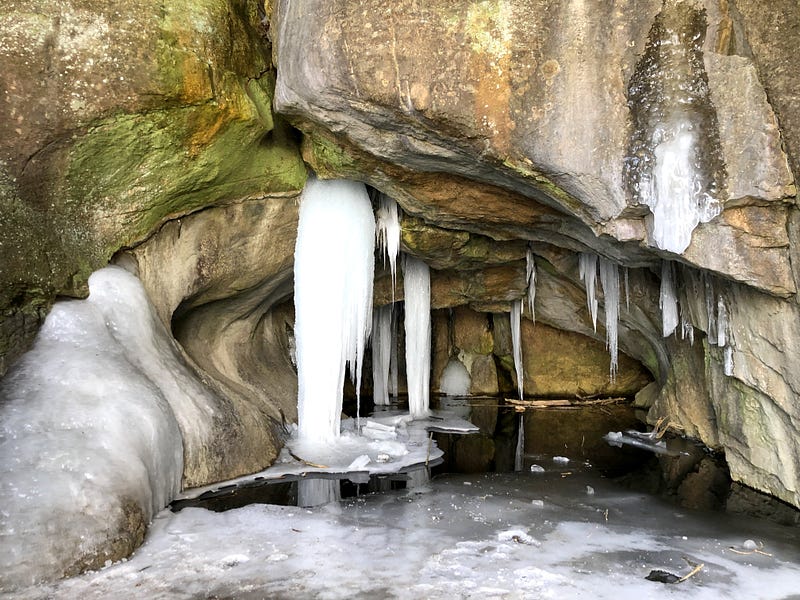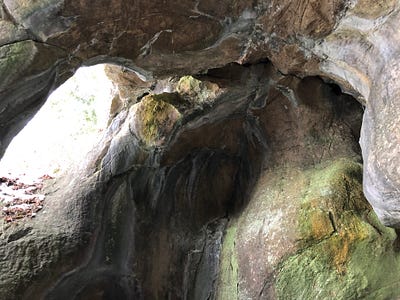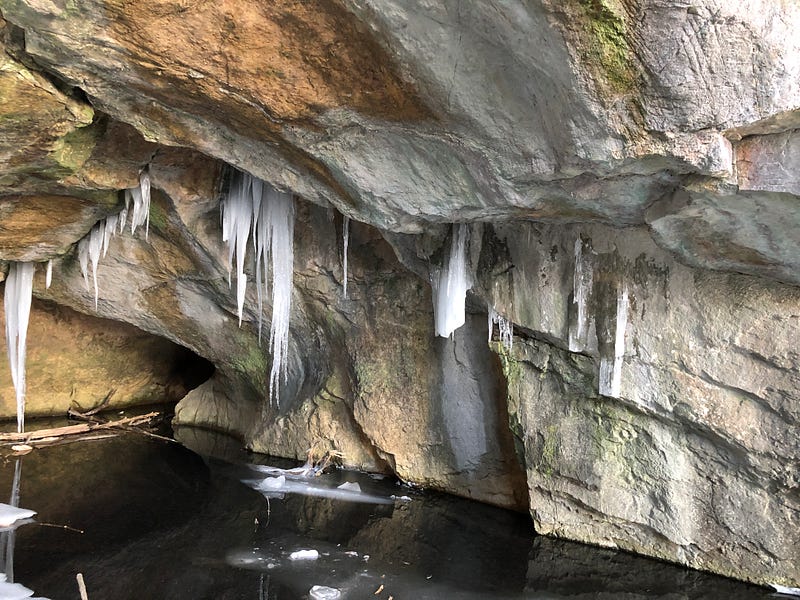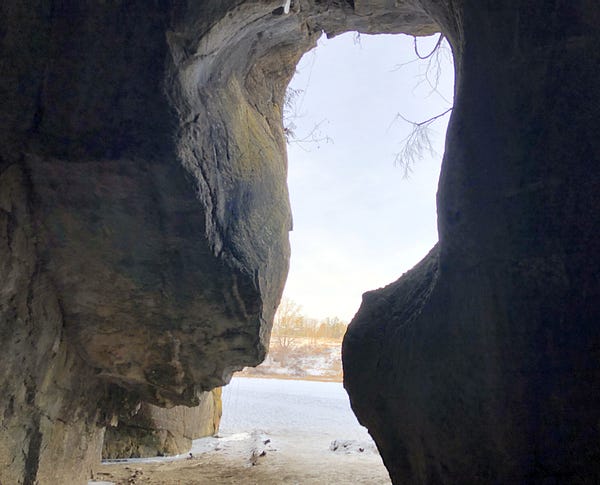Revisiting Land-Locked Sea Caves
A Return to The Donahue Sea Caves in Burlington, Vermont’s Intervale
A Return to The Donahue Sea Caves in Burlington, Vermont’s Intervale
There’s something inherently cool about someplace in Vermont you can only visit in winter because you have to walk across ice to get there.
Such is the case with The Donahue Sea Caves in Burlington, Vermont. After a recent stretch of cold weather this winter, I headed down to see if the way was clear. I’d visited a couple of times last winter, shared here on Medium:
Inside the “Devil’s Den”
The Donahue Sea Caves’ Ancient Beautymedium.com
Ancient Cave Art?
Discovering Possible Glyphs in a Burlington, Vermont “Sea Cave”glowinthedarkradio.medium.com
This year? The path there was fine, fully frozen and well-trodden.
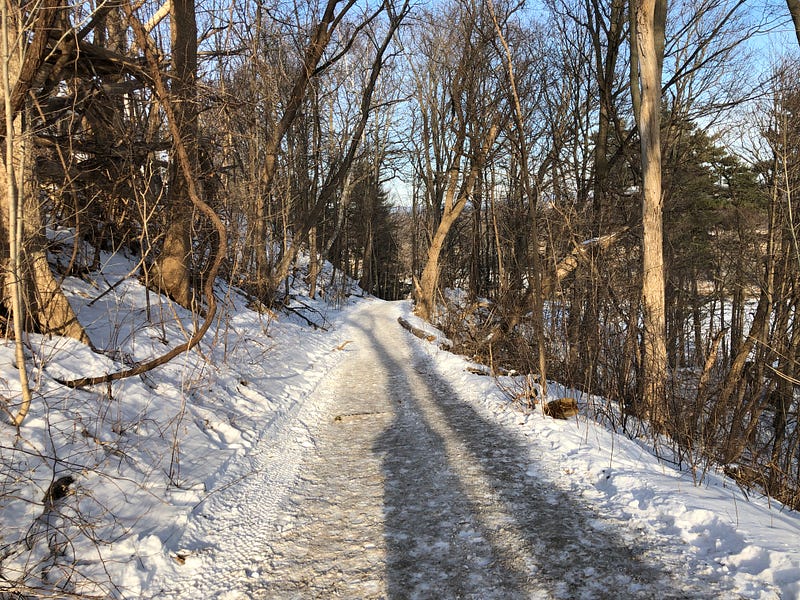
But inside the caves, the floor remained mostly open water, and I couldn’t get too far back into the cavern’s interior. Still, I thought it was worth sharing a look inside this unique space.
It’s remarkable to stand inside and take in the wild colors, the icicles, the rounded shapes, the dripping water and the general atmosphere.
Which you have to enjoy in short bursts, while you can. No chance for lengthy reveries here. It’s a popular stop as folks walk around outdoors in Burlington on better winter days, and couples, kids and dogs will soon break any silence.
It was once believed this set of caves was carved out by the wave action of The Champlain Sea, Lake Champlain’s saltier predecessor, connected at its northern end to the Atlantic Ocean at the close of the Ice Age. But wave action is no longer assumed to be the cause.
Instead, this natural work was likely done by erosion and glaciers, or the raging proto-Winooski River as it settled, as the Sea became Lake Champlain. A geologist and a naturalist offered the local weekly newspaper Seven Days competing views:
“Experts disagree about how the cave was formed. University of Vermont geologist Stephen Wright thinks water dripping through cracks in the bedrock dissolved the rock and formed the cave, and then the cave was ‘fortuitously exposed’ when a glacier eroded the surrounding rock. Naturalist Sean Beckett thinks it was created by an ancient Winooski River channel cutting down through the sand of its old delta ‘like a knife through butter’ and wearing away existing cracks in the bedrock until it formed the smooth cavern you see today.” (from SevenDaysVT.com)
As I enjoy pointing out, The Sea Caves weren’t made by the sea, and there really only appears to be one cave...
At least it’s pretty stunning. And you can only see it in winter, when you can walk across the ice to get there. Again — inherently cool.





